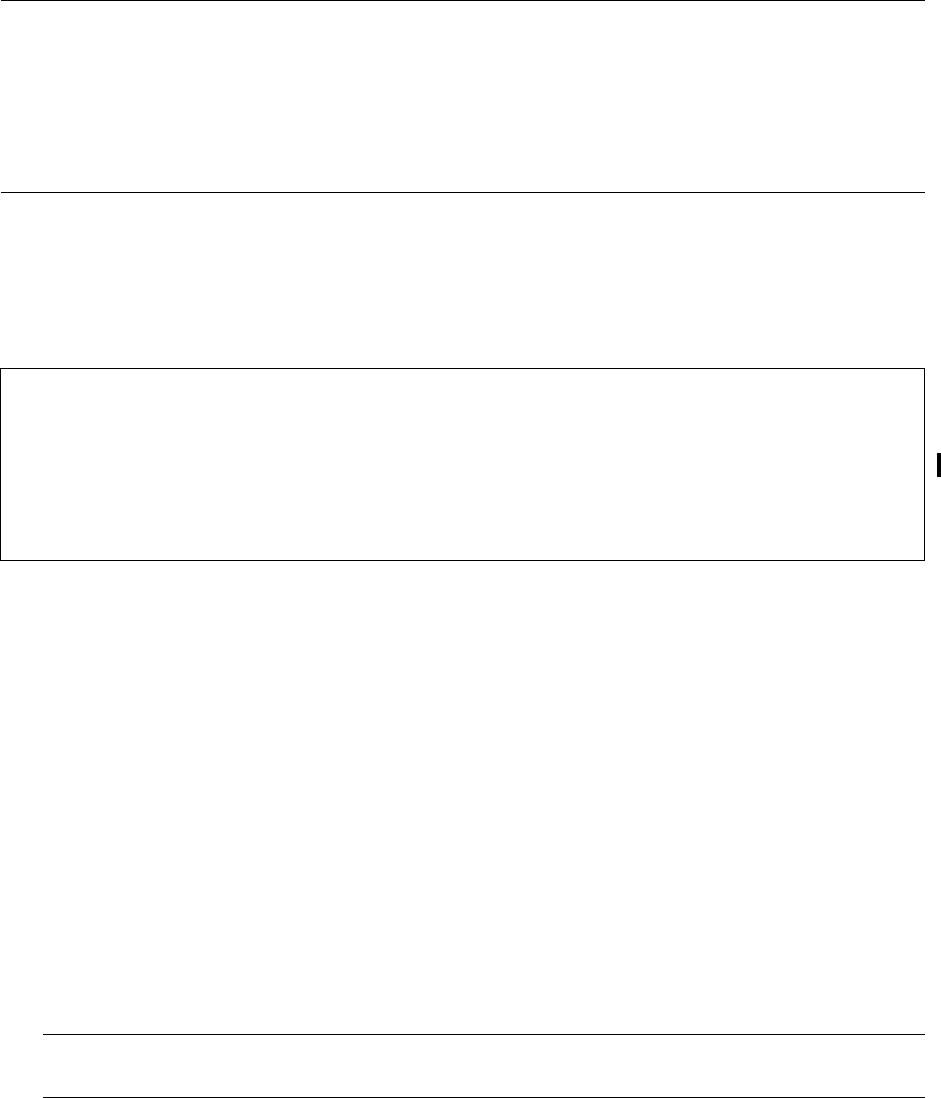RDF System Management Manual
Table Of Contents
- RDF System Management Manual
- What’s New in This Manual
- About This Manual
- 1 Introducing RDF
- RDF Subsystem Overview
- RDF Processes
- RDF Operations
- Reciprocal and Chain Replication
- Available Types of Replication to Multiple Backup Systems
- Triple Contingency
- Loopback Configuration (Single System)
- Online Product Initialization
- Online Database Synchronization
- Online Dumps
- Subvolume- and File-Level Replication
- Shared Access DDL Operations
- EMS Support
- SMF Support
- RTD Warning Thresholds
- Process-Lockstep Operation
- Support for Network Transactions
- RDF and NonStop SQL/MX
- Zero Lost Transactions (ZLT)
- Monitoring RDF Entities With ASAP
- 2 Preparing the RDF Environment
- 3 Installing and Configuring RDF
- 4 Operating and Monitoring RDF
- 5 Managing RDF
- Recovering From File System Errors
- Handling Disk Space Problems
- Responding to Operational Failures
- Stopping RDF
- Restarting RDF
- Carrying Out a Planned Switchover
- Takeover Operations
- Reading the Backup Database
- Access to Backup Databases in a Consistent State
- RDF and NonStop SQL/MP DDL Operations
- RDF and NonStop SQL/MX Operations
- Backing Up Image Trail Files
- Making Online Dumps With Updaters Running
- Doing FUP RELOAD Operations With Updaters Running
- Exception File Optimization
- Switching Disks on Updater UPDATEVOLUMES
- 6 Maintaining the Databases
- 7 Online Database Synchronization
- 8 Entering RDFCOM Commands
- 9 Entering RDFSCAN Commands
- 10 Triple Contingency
- 11 Subvolume- and File-Level Replication
- 12 Auxiliary Audit Trails
- 13 Network Transactions
- Configuration Changes
- RDF Network Control Files
- Normal RDF Processing Within a Network Environment
- RDF Takeovers Within a Network Environment
- Takeover Phase 1 – Local Undo
- Takeover Phase 2 – File Undo
- Takeover Phase 3 – Network Undo
- Takeover Phase 3 Performance
- Communication Failures During Phase 3 Takeover Processing
- Takeover Delays and Purger Restarts
- Takeover Restartability
- Takeover and File Recovery
- The Effects of Undoing Network Transactions
- Takeover and the RETAINCOUNT Value
- Network Configurations and Shared Access NonStop SQL/MP DDL Operations
- Network Validation and Considerations
- RDF Re-Initialization in a Network Environment
- RDF Networks and ABORT or STOP RDF Operations
- RDF Networks and Stop-Update-to-Time Operations
- Sample Configurations
- RDFCOM STATUS Display
- 14 Process-Lockstep Operation
- Starting a Lockstep Operation
- The DoLockstep Procedure
- The Lockstep Transaction
- RDF Lockstep File
- Multiple Concurrent Lockstep Operations
- The Lockstep Gateway Process
- Disabling Lockstep
- Reenabling Lockstep
- Lockstep Performance Ramifications
- Lockstep and Auxiliary Audit Trails
- Lockstep and Network Transactions
- Lockstep Operation Event Messages
- 15 NonStop SQL/MX and RDF
- Including and Excluding SQL/MX Objects
- Obtaining ANSI Object Names From Updater Event Messages
- Creating NonStop SQL/MX Primary and Backup Databases from Scratch
- Creating a NonStop SQL/MX Backup Database From an Existing Primary Database
- Online Database Synchronization With NonStop SQL/MX Objects
- Offline Synchronization for a Single Partition
- Online Synchronization for a Single Partition
- Correcting Incorrect NonStop SQL/MX Name Mapping
- Consideration for Creating Backup Tables
- Restoring to a Specific Location
- Comparing NonStop SQL/MX Tables
- 16 Zero Lost Transactions (ZLT)
- A RDF Command Summary
- B Additional Reference Information
- C Messages
- D Operational Limits
- E Using ASAP
- Index

Entering RDFCOM Commands
HP NonStop RDF System Management Manual—524388-003
8-40
Command Overview
INITIALIZE RDF
The INITIALIZE RDF command creates the RDF configuration and context files for
establishment of a new RDF configuration.
There must be no files in the control subvolume on either the primary or backup
systems when you issue this command, otherwise the command will fail. If you are
issuing the INITIALIZE RDF command within an existing RDF configuration, you must
first delete all the files from the RDF control subvolume on both the primary and
backup systems.
backup-system-name
specifies the backup system. The system name begins with a backslash (\)
followed by 1 to 7 letters or digits; the first character following the backslash must
be a letter. There is no default system name.
suffix-character
is an alphanumeric character to be appended to the primary system name to form
the RDF control subvolume name. If you omit the SUFFIX parameter, the default
control subvolume name is the name of the primary system with no suffix
character.
TIMESTAMP <day><mon><year><hour>:<min>
causes RDF to initialize at the specified time, which must correspond exactly to the
time of a TMF shutdown.
day
is a number from 1 to 31.
Note. If you plan to initialize more than one RDF subsystem on your primary system, then you
must open each new control subvolume before you initialize and configure your new RDF
environment. This means that after you have initialized one RDF subsystem, you must enter
an OPEN command, specifying the new control subvolume. You can then enter the
INITIALIZE command. If a configuration file is not already in the specified control subvolume
when the open command is issued, RDFCOM issues a warning indicating that a configuration
record was not found. This is expected behavior.
INITIALIZE RDF , BACKUPSYSTEM backup-system-name
[ , SUFFIX suffix-character ]
[ , TIMESTAMP <day><mon><year><hour>:<min> ]
[ , INITTIME <day><mon><year><hour>:<min> | NOW ]
[ , SYNCHDBTIME <day><mon><year><hour>:<min> ]
[!]
Note. There is no space between day, month, and year. The seconds must not be
included in the timestamp.










